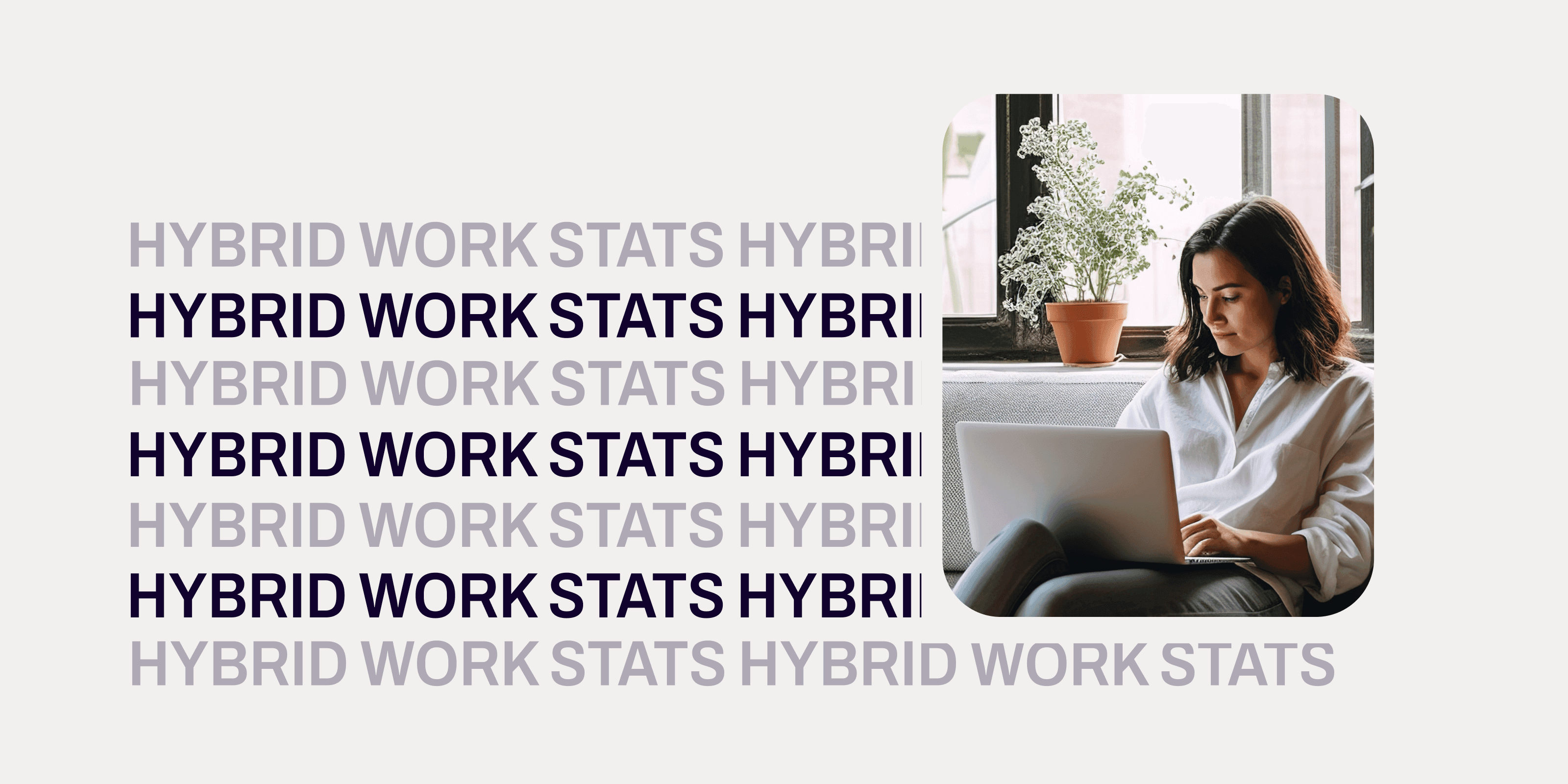
Tags
Share
The world of work is rapidly changing, and the rise of hybrid workplaces that blend remote and in-person work is at the forefront of this transformation. Organizations can attract top talent and adapt to a rapidly evolving workforce by creating a flexible work environment through using unified communication tools.
Businesses are embracing hybrid work as a means to boost productivity, increase collaboration, improve communication in the workplace, and drive economic growth. Being updated on the latest hybrid work stats is vital for business leaders to drive growth and success. By understanding the latest hybrid work trends and insights, you can make informed decisions on how to structure your workforce and operations.
As we move further into 2024, the importance of hybrid work in shaping the future of work cannot be overstated. Here are the key hybrid work stats, categorized into the following sections:
Hybrid Workplace as the New Norm
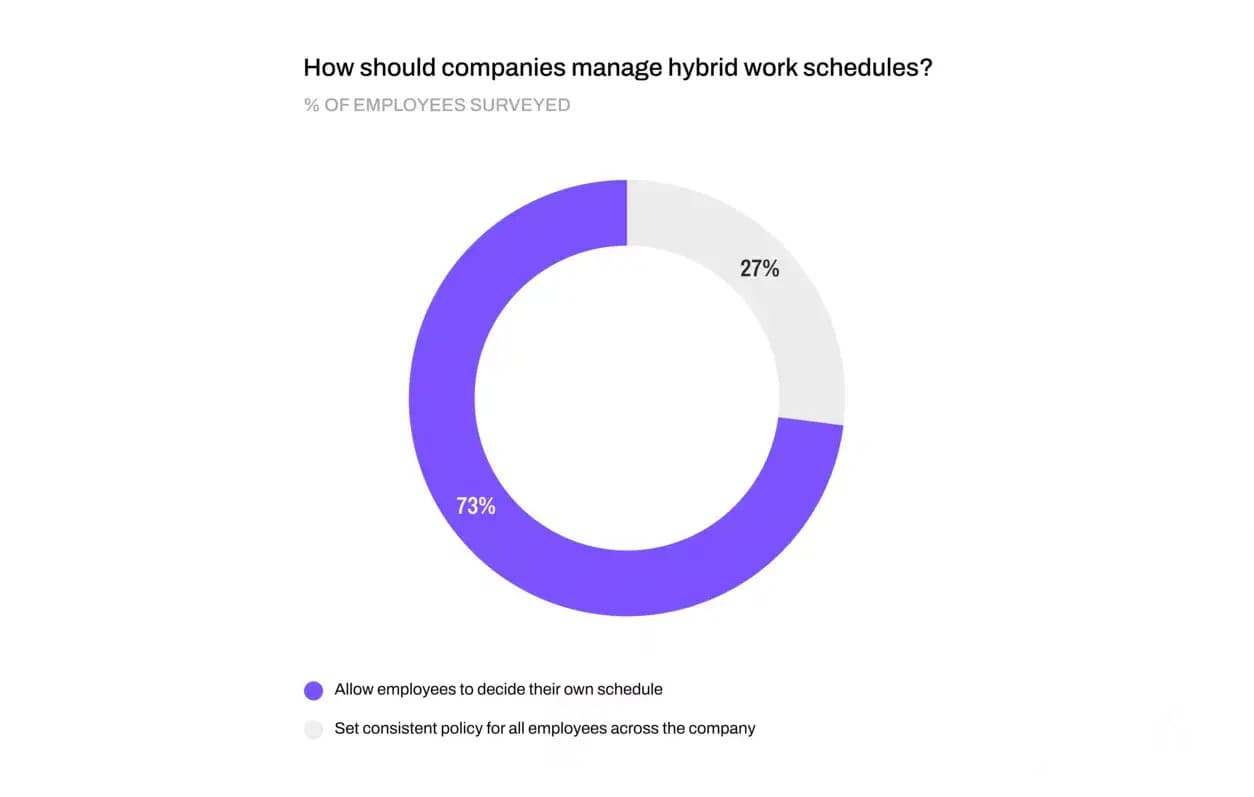
73% of employees prefer flexibility, and the ability to work the hours that work best for them and their team. (Dialpad)
87% of the U.S. workforce chooses to work flexibly when they can. (McKinsey)
29% of companies are permanently allowing hybrid work. (Buffer)
36% of employees chose hybrid work, and 42% of workers chose remote work, while the interest in in-office work decreased to 22%. (Owl Labs)
28% of leaders have established team agreements for hybrid work to define why and when to go to the office. (Microsoft, 2022)
82% of company leaders plan to allow employees to work remotely some of the time, while 47% plan to allow remote work full-time. (Gartner)
83% of executives surveyed think remote work is successful, and 55% of employees would prefer to work remotely at least three days a week. (PwC)
71% of employees who work remotely at least some of the time reported feeling happy with their job, compared to 55% of those who work on-site only. (Owl Labs)
Economic Benefits of Hybrid Workplaces
Businesses can save up to $11,000 per year per employee on real estate costs with hybrid work arrangements. (Global Workplace Analytics)
78% of HR professionals say flexible schedules and remote working are effective ways to retain workers without spending money. (Crain's Future of Work)
Hybrid work arrangements have been shown to increase employee productivity by 27%. (Nicholas Bloom, Stanford University)
71% of employees who communicate everyday are more productive because they feel connected to their colleagues. (Connected Culture Report)
Impact on Labor Market and Talent
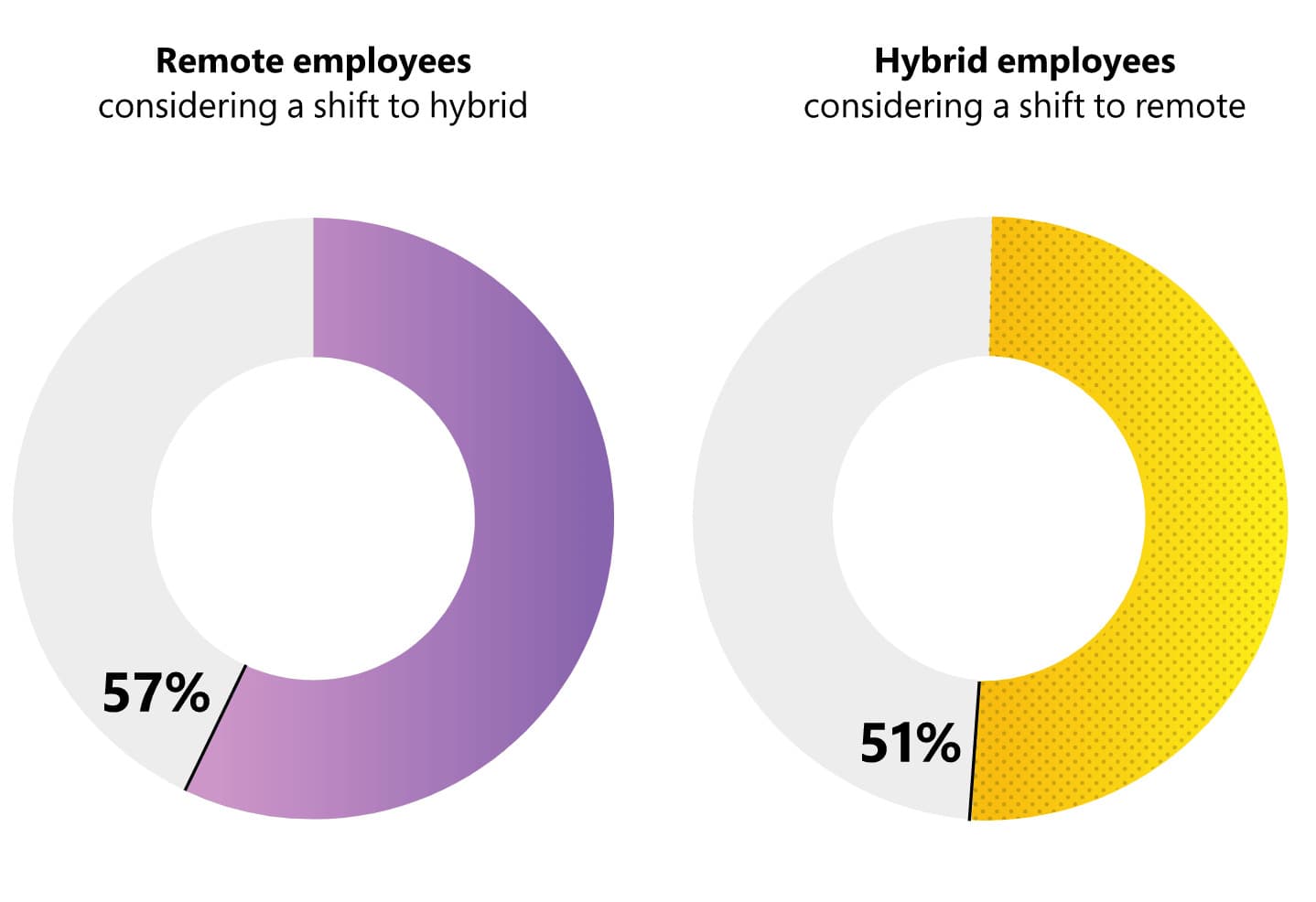
57% are considering a shift to hybrid work in the year ahead versus 51% overall. (Microsoft)
72.6% of millennials prefer a hybrid work set up—the most compared to other generations. (Statista)
Flexible work job postings have increased by 457% since the pandemic began. (LinkedIn)
64.2% of the global workforce saves four hours per week when having a hybrid work schedule. (Cisco)
66% of business leaders are considering transitioning to a more hybrid office work arrangement. (Statista)
80% of employees say they would turn down a job that didn't offer flexible work arrangements. (IWG)
65% of professionals are more interested in flexible work options than they were before the pandemic. (FlexJobs)
Critical Factors for Hybrid Workplace Success
Technology Infrastructure
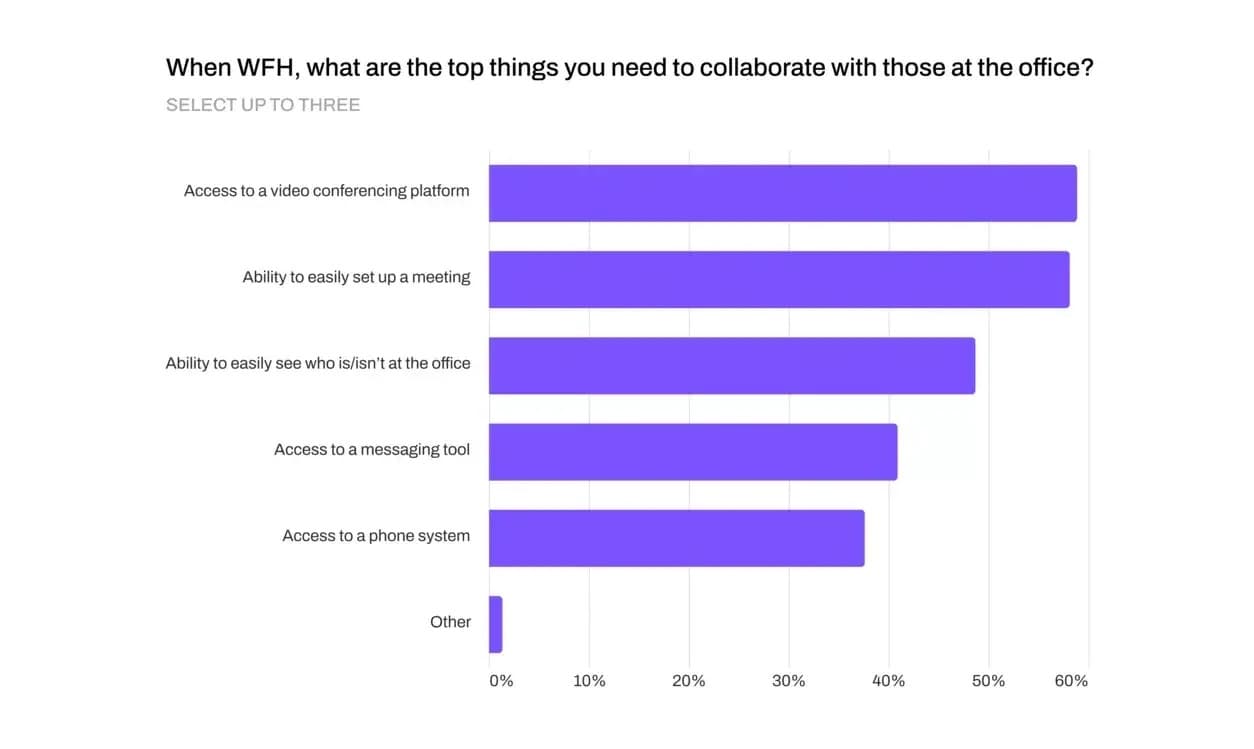
59% of the respondents said video conferencing is an important tool for collaboration. (Dialpad)
Companies that use collaborative technologies such as chat, video conferencing, and project management tools report a 20% increase in engagement and productivity. (McKinsey)
40% of employees say they need better technology and tools to be effective in a hybrid work environment. (Forrester Study)
56% of hybrid workers believe prioritizing asynchronous communication methods, such as chat and email, would improve mental health at work. (Dialpad)
84% say networking infrastructure is essential for a seamless working from home experience, but only 68% say their company has it. (Cisco)
Training and Development
60% of employees need more support from their employer to develop the skills required for hybrid work. (Gallup)
42% of workers indicate they are thriving in regards to hybrid work (Statista)
79% of workers who received job-related training and development opportunities reported feeling highly engaged in their work. (Quantum Workplace)
94% of employees would stay at a company with better learning resources. (LinkedIn)
Challenges of Hybrid Workplaces
Management
56% of C-suite executives, compared to other levels, find it harder to end their workday and experience increased isolation while working from home when compared to working at an office. (Dialpad)
76% of hybrid and remote knowledge workers reported feeling disconnected to their organization’s culture. (Gartner)
72% of employees preferred a mix of in-person and remote work, but 52% of employers had not communicated their plans for a hybrid work model. (PwC)
54% of employees say they'd leave their job for one that offers flexible work time. (Gallup)
43% of respondents say their organizations have programs that inform and educate remote workers about risks such as cybersecurity. (Keeper)
Employees
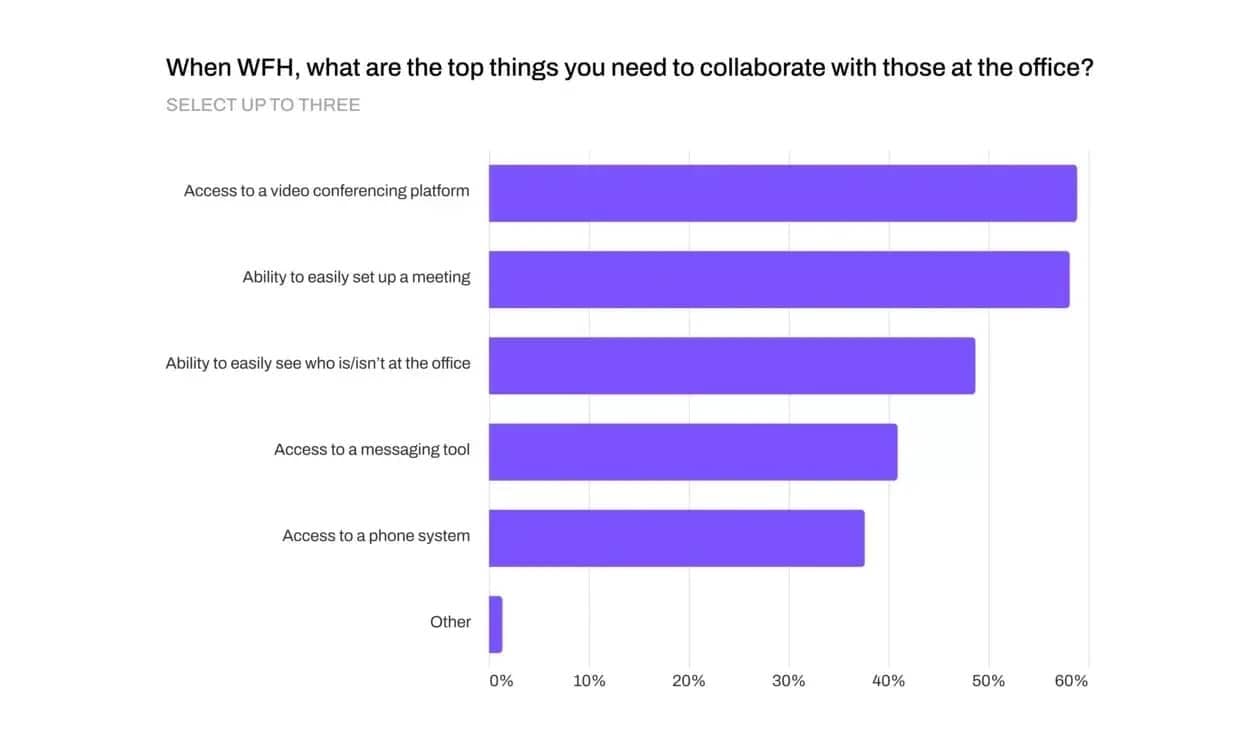
62% of employees say the biggest downside to going into an office is commuting (Dialpad)
58% of employees said that communication with colleagues was more difficult in hybrid work arrangements than in-person work. (Microsoft)
47% of employees in hybrid work arrangements reported feeling less connected to their colleagues than in-person workers. (Slack)
If asked to work in the office on a full-time basis, 43% of employees would contemplate resigning. (FlexOS)
34% of respondents said that face-to-face interruptions from colleagues was the biggest reason they lose focus at work. (The Economist)
55% believe that micromanaging behaviors have increased with hybrid and remote working. (Cisco)
38% of hybrid employees said that their biggest challenge is knowing when and why to come into the office. (Microsoft)
The Future of Work
By 2024, the hybrid work model is expected to grow to 81%. (AT&T)
By 2026, the global digital workplace market is projected to reach USD 72.2 billion, growing at a 21.3% CAGR. (MarketsandMarkets)
By 2025, it is estimated that 70% of the workforce will be working remotely at least five days a month. (LinkedIn)
A survey of global executives found that 87% believe that the hybrid work model will be the norm within the next two years. (KPMG)
The global remote workplace services market size will grow by USD 58.5 billion in 2027, at a CAGR of 23.8%. (MarketsandMarkets)
20-25% of the workforce will be working from home three to five days per week which could impact transportation, commercial real estate, and consumer spending patterns. (McKinsey)
20% prefer a flexible work arrangement, which includes a mix of hybrid work and remote-first work. (Buffer)
The future of hybrid work looks promising as more businesses adopt this model to drive productivity, collaboration, and economic growth. Hybrid workplaces that combine remote and in-person work are gaining prominence in the world of work. As remote and hybrid work continues to gain popularity, we can expect to see more technological advancements and cloud-based communication tools developed to support this new way of working.
Despite the numerous benefits that hybrid work offers,
also present challenges that business leaders need to address. This includes the need for appropriate technology infrastructure, the importance of management, employee training and development, and maintaining company culture and employee engagement. That’s why it’s important to keep up with the latest hybrid work statistics so you can continue to
Learn how to power your hybrid workforce with Dialpad
Book a chat with our team to learn about how businesses and organizations are already using Dialpad Ai to make their contact center, support, and sales teams more productive, with real-time insights and assistance for agents. Or, take a self-guided interactive tour of the app on your own!

